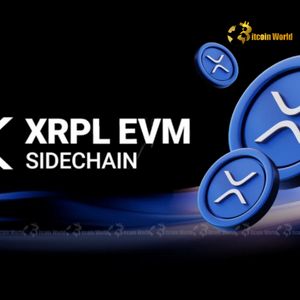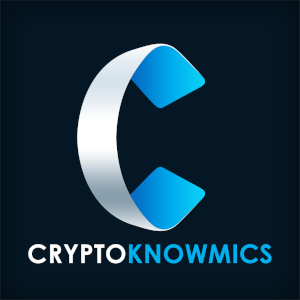XRPL EVM Sidechain: Unleashing Revolutionary Ethereum dApps on XRP Ledger
7 min read
BitcoinWorld XRPL EVM Sidechain: Unleashing Revolutionary Ethereum dApps on XRP Ledger The cryptocurrency world is buzzing with a groundbreaking development that promises to reshape the landscape of decentralized applications. Ripple, a major player in the blockchain space, has officially launched the XRPL EVM Sidechain on mainnet. This isn’t just another update; it’s a monumental step that brings Ethereum-compatible smart contracts directly to the XRP Ledger. For anyone invested in the future of digital finance and decentralized technology, this move signifies a powerful leap forward, promising to unlock new possibilities for developers and users alike. What is the XRPL EVM Sidechain and Why is it a Game-Changer? At its core, the XRPL EVM Sidechain is an innovative bridge connecting two distinct, yet powerful, blockchain ecosystems: the XRP Ledger and Ethereum. Historically, these networks operated largely in isolation, each with its unique strengths and weaknesses. The XRP Ledger, known for its speed and efficiency in processing payments, lacked native smart contract capabilities comparable to Ethereum’s robust ecosystem. Ethereum, on the other hand, boasts the largest and most vibrant decentralized application (dApp) ecosystem but often grapples with scalability issues and high transaction fees. This sidechain changes everything. It allows developers to deploy smart contracts written in Solidity (Ethereum’s primary smart contract language) directly onto a network that is deeply integrated with the XRP Ledger. Think of it as opening a superhighway between two bustling cities that were previously connected only by slow, winding roads. This integration means that the vast universe of Ethereum dApps can now potentially leverage the speed and low transaction costs associated with the XRP Ledger, creating a powerful synergy that benefits the entire Web3 community. Bridging Worlds: The Fusion of XRP Ledger and Ethereum dApps For years, the blockchain industry has sought true interoperability – the ability for different blockchain networks to communicate and interact seamlessly. The launch of the XRPL EVM Sidechain is a significant stride in this direction. The XRP Ledger has always been a powerhouse for fast, low-cost transactions, making it ideal for payments and token issuance. However, its original design did not prioritize complex smart contract functionality to the extent seen on Ethereum. By integrating the Ethereum Virtual Machine (EVM) – the computational engine that powers Ethereum’s smart contracts – into a sidechain, the XRP Ledger ecosystem gains immediate access to a mature and widely adopted development environment. This means that decentralized finance (DeFi) protocols, non-fungible token (NFT) marketplaces, gaming dApps, and countless other applications that thrive on Ethereum can now find a new home on a network known for its efficiency. It’s about bringing the best of both worlds together, offering developers more choices and users more accessible, high-performance applications. A New Era for Developers: Building on the Ripple Blockchain The impact of this development on developers is profound. One of the biggest hurdles for blockchain developers has been the need to learn new programming languages and frameworks when moving between different ecosystems. With the XRPL EVM Sidechain , this barrier is significantly lowered. Developers familiar with Solidity and Ethereum’s tooling can now effortlessly deploy their existing codebases onto the new sidechain. CoinDesk reported on this very benefit, highlighting the reduction in deployment costs and complexity. What does this mean in practice? Imagine a developer who has built a successful DeFi protocol on Ethereum. Instead of rewriting their entire application from scratch for a new blockchain, they can now port it to the XRPL EVM Sidechain with minimal effort. This accelerates innovation, reduces time-to-market for new projects, and fosters a more collaborative environment within the broader Ripple blockchain ecosystem. It opens up the XRP Ledger to a much wider pool of talent and existing projects, promising an explosion of new applications and services. Transforming Web3 Development: Opportunities and Innovation This strategic move by Ripple is set to transform the landscape of Web3 Development . For too long, the blockchain space has been somewhat fragmented, with distinct communities and technologies operating in silos. The XRPL EVM Sidechain fosters a more interconnected and interoperable future. This integration is not just about bringing Ethereum dApps to XRPL; it’s about creating entirely new possibilities that leverage the unique strengths of both networks. Consider the potential: fast, cheap transactions from the XRP Ledger could power the backend of complex DeFi operations, while the EVM sidechain handles the intricate smart contract logic. This could lead to innovative solutions for cross-chain liquidity, more efficient asset management, and novel approaches to decentralized identity and data management. The enhanced interoperability promises to unlock a wave of creativity, as developers are no longer constrained by the limitations of a single blockchain. Unpacking the Core Benefits of the XRPL EVM Sidechain The launch of this sidechain brings a multitude of advantages to the XRP Ledger ecosystem and the broader crypto community. Let’s explore some of the key benefits: Seamless Deployment of Existing Ethereum dApps: This is perhaps the most immediate and impactful benefit. Developers can migrate their Solidity-based smart contracts and dApps with minimal changes, tapping into the XRP Ledger’s performance capabilities without reinventing the wheel. This significantly reduces development time and costs. Cost Efficiency and Speed: The XRP Ledger is renowned for its low transaction fees and high transaction throughput. By bringing EVM compatibility to this environment, users and developers can experience the benefits of Ethereum’s rich dApp ecosystem without the often prohibitive gas fees and network congestion associated with the Ethereum mainnet. Access to a Broader User Base: The XRP Ledger has a significant and dedicated user base, particularly within the payments sector. By enabling Ethereum dApps on XRPL, these applications gain access to a new audience, potentially accelerating adoption and increasing liquidity across the ecosystem. Enhanced Liquidity and Capital Efficiency: The ability to move assets and value seamlessly between the XRP Ledger and the EVM sidechain creates a more fluid and efficient capital environment. This can lead to more robust DeFi protocols and better pricing for assets. Developer Familiarity and Tooling: Leveraging the EVM means developers can continue to use familiar tools, frameworks, and programming languages (like Solidity, Truffle, Hardhat, Web3.js) that are widely supported and have extensive documentation. This lowers the barrier to entry for new projects wanting to build on the XRP Ledger. Future-Proofing the XRP Ledger: By embracing interoperability and expanding its smart contract capabilities, the XRP Ledger positions itself as a more versatile and competitive platform in the evolving blockchain landscape. It ensures that the ecosystem remains relevant and attractive for cutting-edge Web3 innovation. Navigating the Landscape: Challenges and Considerations for the XRPL EVM Sidechain While the benefits are substantial, it is also important to consider the challenges and ongoing efforts required for the successful integration and adoption of the XRPL EVM Sidechain : Security of the Bridge: Any bridge between two distinct blockchain networks introduces a potential point of vulnerability. Ensuring the robustness and security of the bridge mechanism that facilitates asset transfers between the XRP Ledger and the EVM sidechain is paramount. Continuous audits and community oversight will be crucial. Competition in the EVM Landscape: The EVM-compatible blockchain space is highly competitive, with many established players like Polygon, Binance Smart Chain, Avalanche, and others. The XRPL EVM Sidechain will need to differentiate itself through its unique advantages, such as direct integration with the XRP Ledger’s payment capabilities and its existing network effects. Community Adoption and Developer Buy-in: While the technical capabilities are impressive, sustained success depends on attracting a critical mass of developers and users. Education, developer support, and incentives will be key to fostering a thriving ecosystem around the sidechain. Decentralization and Governance: As the sidechain evolves, questions around its governance model and the extent of its decentralization will become increasingly important. Ensuring transparency and community involvement in decision-making processes will be vital for long-term trust and sustainability. Real-World Applications: What Can We Expect from Ethereum dApps on XRPL? The practical implications of the XRPL EVM Sidechain are vast and exciting. We can anticipate a surge in innovative applications across various sectors: Decentralized Finance (DeFi): Expect new lending and borrowing protocols, decentralized exchanges (DEXs), yield farming opportunities, and synthetic asset platforms to emerge, leveraging the XRP Ledger’s efficiency for faster and cheaper transactions. Non-Fungible Tokens (NFTs): NFT marketplaces and projects could benefit immensely from lower minting and trading fees, making NFTs more accessible to a broader audience. Imagine ultra-fast NFT transactions and innovative new use cases that combine NFTs with the XRP Ledger’s payment rails. Blockchain Gaming: Game developers can build more engaging and responsive decentralized games. Lower transaction costs mean players can interact with in-game assets more frequently without incurring significant fees, enhancing the overall gaming experience. Enterprise Solutions: Businesses looking to integrate blockchain into their operations can leverage the EVM sidechain for complex smart contract logic while benefiting from the speed and reliability of the Ripple blockchain for settlement and payments. This could include supply chain management, tokenized real estate, and digital identity solutions. Cross-Chain Innovations: The sidechain opens the door for truly cross-chain applications that seamlessly interact with assets and data on both the XRP Ledger and Ethereum, paving the way for a more unified blockchain ecosystem. Looking Ahead: The Future of the XRP Ledger Ecosystem and Web3 Development The launch of the XRPL EVM Sidechain is more than just a technical upgrade; it’s a strategic move that significantly bolsters the XRP Ledger’s position in the competitive blockchain arena. By embracing interoperability and the widely adopted EVM standard, Ripple is demonstrating a commitment to fostering a more inclusive and expansive decentralized future. This initiative has the potential to dramatically increase the utility and adoption of the XRP Ledger , attracting new developers, projects, and users who seek the best of both high-performance payments and robust smart contract capabilities. As the sidechain matures and more Ethereum dApps migrate or are built natively, we can expect a vibrant ecosystem to flourish. This will not only drive innovation within the XRP Ledger community but also contribute significantly to the overall advancement of Web3 Development . The journey towards a fully interconnected and efficient decentralized internet takes another monumental step forward with this exciting development. To learn more about the latest crypto market trends, explore our article on key developments shaping the XRP Ledger’s future price action. This post XRPL EVM Sidechain: Unleashing Revolutionary Ethereum dApps on XRP Ledger first appeared on BitcoinWorld and is written by Editorial Team

Source: Bitcoin World



